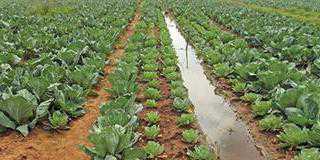In the 1800s, with wagons the mode of transport, delivering fresh produce was restricted to the nearest town, and South Africa would have had even more markets.
By the mid-1900s roads had improved, whichmeant better accessibility. Trains had become the main transport option while trucks were beginning to play a role.
These days, even allowing for those perilous potholes, we have excellent roads, and refrigerated trucks can deliver fresh produce to distant urban areas. And here is where the action is: the big markets, the variety of products, the trade deals, and, most importantly, the buyers.
But what of the smaller markets away from the big cities? Invariably bypassed in favour of the big markets, can they survive?
As I mentioned in a recent article, the two regional markets in Limpopo are flourishing despite the trends I’ve noted. But not all small markets have the same advantages as these two, which means survival will be more challenging.
As it is, a number of the smaller markets are struggling despite having been in existence for many years – and despite being located in large urban centres.
Can they make the changes needed to survive? Will they perhaps find a niche in which they can operate? The newer markets opening in smaller towns talk enthusiastically of local farmers and buyers supporting them. No doubt some farmers are, but the acid test will be the prices they achieve for the farmers compared with what the big markets are getting.
Will there be enough support?
For the buyers, the key issues will be variety and price. Can the market stock enough of everything to make it a ‘one-stop shop’ for buyers?
There is not enough space to offer solutions here, but each market has to consider its own circumstances very carefully. It must also take into account the realities of modern fresh produce marketing. Can the smaller markets really generate enough support from both farmers and buyers to become viable? It’s a tricky question.












